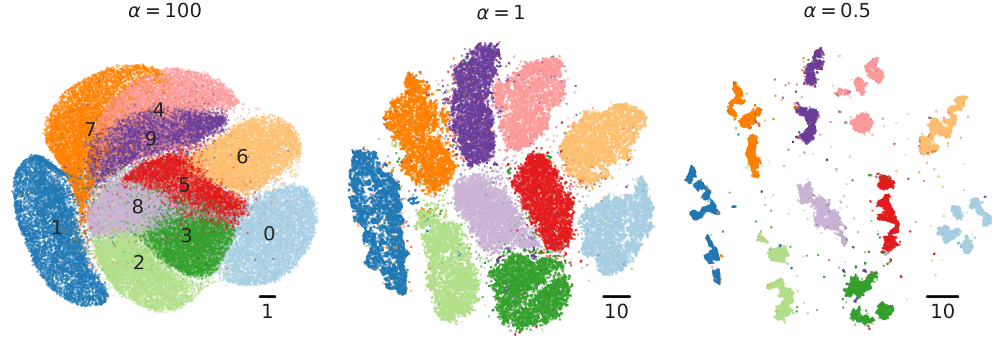Heavy-tailed kernels reveal a finer cluster structure in t-SNE visualisations
T-distributed stochastic neighbour embedding (t-SNE) is a widely used data visualisation technique. It differs from its predecessor SNE by the low-dimensional similarity kernel: the Gaussian kernel was replaced by the heavy-tailed Cauchy kernel, solving the "crowding problem" of SNE. Here, we develop an efficient implementation of t-SNE for a $t$-distribution kernel with an arbitrary degree of freedom $\nu$, with $\nu\to\infty$ corresponding to SNE and $\nu=1$ corresponding to the standard t-SNE. Using theoretical analysis and toy examples, we show that $\nu<1$ can further reduce the crowding problem and reveal finer cluster structure that is invisible in standard t-SNE. We further demonstrate the striking effect of heavier-tailed kernels on large real-life data sets such as MNIST, single-cell RNA-sequencing data, and the HathiTrust library. We use domain knowledge to confirm that the revealed clusters are meaningful. Overall, we argue that modifying the tail heaviness of the t-SNE kernel can yield additional insight into the cluster structure of the data.
PDF Abstract